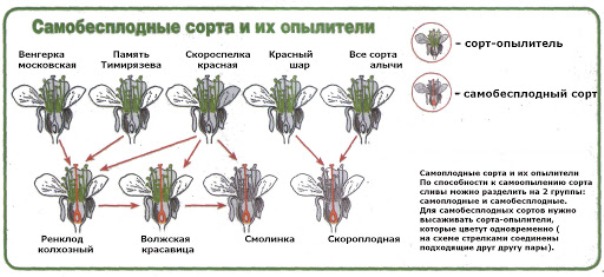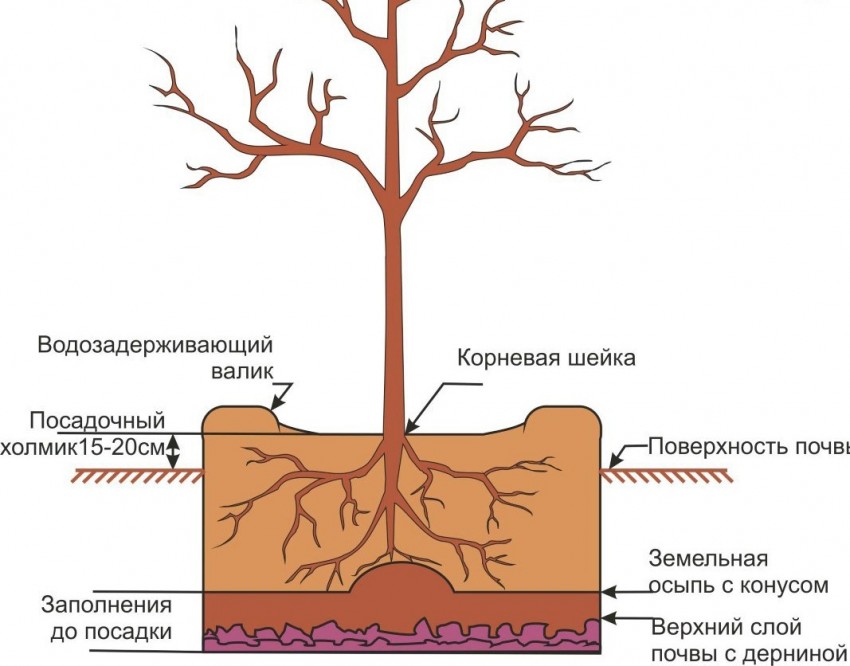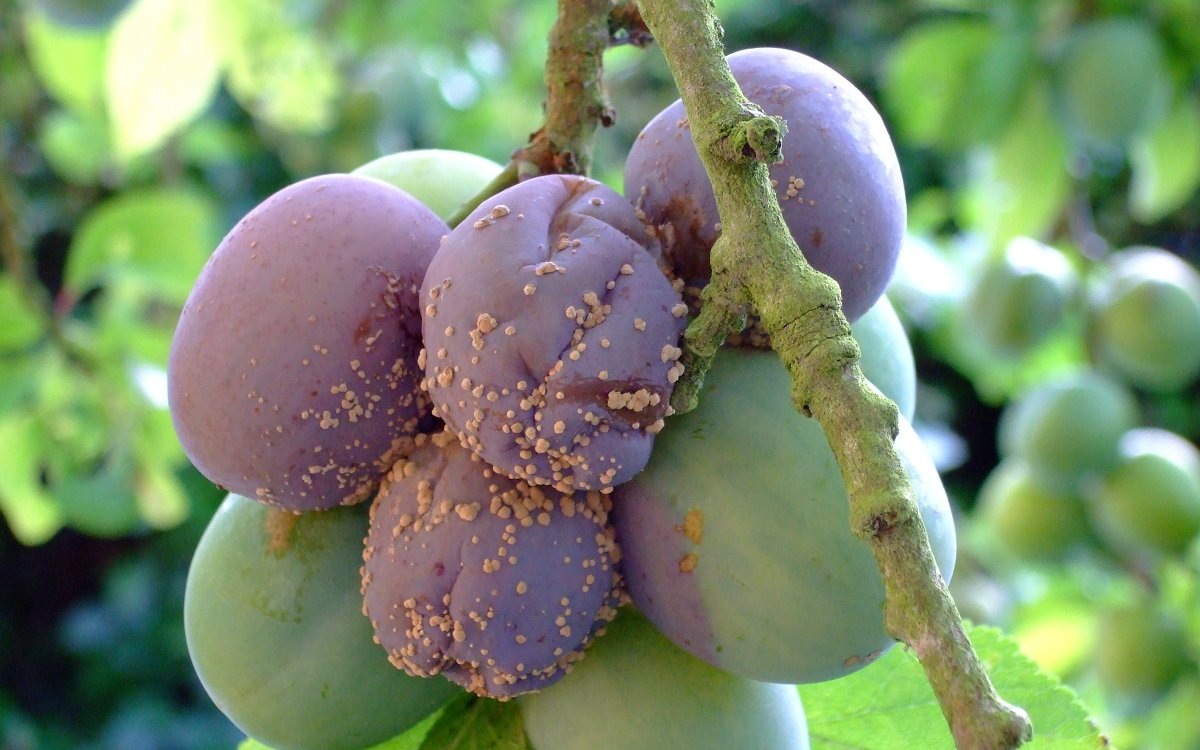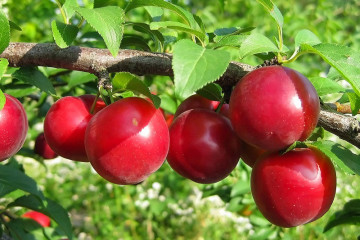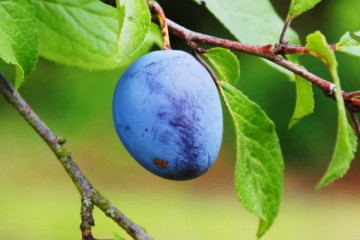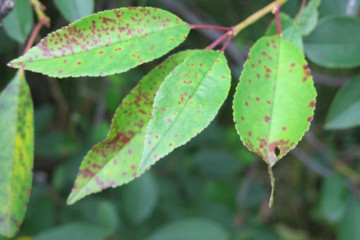Why the plum does not bear fruit, and what to do with the problem
The plum tree is very demanding to care for. Everything is important for him - the place where it grows, watering, soil acidity, the availability of food. If the tree lacks maintenance, or the weather conditions are not favorable for it, the plum does not bear fruit. But sometimes a lack of harvest has been observed for several years, and it is important for a gardener not only to find out the reason for this behavior, but also to eliminate it.
Why the plum does not bear fruit
For any deviations from the required conditions of detention, the capricious tree reacts immediately. The plum does not bloom or bear fruit. And sometimes he drops his almost ripe crop. Why doesn't the plum bear fruit? There can be many reasons.
Self-fertile variety of plum
Many varieties of plums are self-infertile. This means that they need a joint planting with pollinating varieties. Each variety has its own pollinator neighbor. This should be taken into account when planting young seedlings.
Freezing in winter
Freezing in winter depends not only on the low temperatures that are relevant for the Moscow region.
If the plum has not received moisture-charging irrigation for the winter, it will not be able to protect its roots from frost. If the question arises why the plum does not bear fruit after a frosty winter, it is possible that the tree is simply weakened.
Weather
With sudden changes in temperature and cold winds, pollen on flowers can become sterile. This is why the plum blooms but does not bear fruit.
Sour soil
The tree is very demanding on the pH of the soil. For active fruiting, plums need soil with a neutral pH reaction. In this case, the answer to the question why there are no fruits on the plum is that the soil is too acidic.
Violation of watering rules
On hot days of summer, the plum needs abundant watering. Otherwise, juicy fruits that have not grown to the required size will simply fall off the tree.
Return frosts
May frosts are typical for the middle zone of Eurasia. They can freeze fruit buds or young plum shoots. A weakened tree will not be able to fully form flowers and fruits, therefore it discards them.
Incorrect planting of a plum sapling
The first thing to look out for when planting plums is the acidity of the soil in the planting pit. The second is the level of the root collar. If it is buried in the hole, the tree will not bear fruit.
Excess or shortage of fertilizers
Lack of potassium is the main reason for the appearance of flowers and the absence of fruits on a tree. Depleted soil will not be able to provide the necessary set of nutrition to a capricious plum, therefore, it will not be able to fully bear fruit.
Excess nitrogen in the soil will contribute to the growth of green mass and tree roots, and you can completely forget about the fruits this season.
The tree is not pollinated
Cold spring does not allow insects to fully pollinate plum flowers. Therefore, the plum can bloom, but not bear fruit. A rainy spring also affects the plum crop. During the rain, pollen rolls off the flower, and further manipulations with it are meaningless.
Poor climatic conditions
In the harsh conditions of Siberia, the tree feels uncomfortable, and may stop throwing out flowers and fruits. Also, too dry weather without adequate watering will cause partial or complete dumping of the crop.
Pests and diseases
Pests that eat flower buds prevent flowers and fruits from setting. Such a parasite is called a flower beetle, and it can be identified when the tree has lost its fruit. Plum fruits and seeds are damaged by the caterpillar of the moth, the thickfoot and the sawfly.
Among the diseases that directly affect the fruiting of a tree, one can single out clasterosporia and fruit rot.
Insufficient lighting of the site
Sunlight is important for the plant not only during the ripening period. If a tree is just starting to bloom and lacks lighting, it will shed its flowers and will not bear fruit this season.
Insufficient pruning
If in the fall a lot of growth and extra branches are left on the tree, the tree will give food to these "unnecessary" reserves. The plum will not bear fruit in this season, since it will not be able to provide them with the necessary elements.
What to do to resume fruiting
First of all, you should conduct an analysis and find out why the plum does not bear fruit, and what to do. Seasonal causes are pests, improper pruning, lack of watering, and improper wintering. It is important to pay attention to the soil, its nutritional value and acidity. All these reasons can be easily eliminated with proper care, and then the next season the tree will resume its fruiting.
If the plum has been blooming for several years in a row, but not bearing fruit, what to do? A transplant can make it bear fruit. But in this case, it is important to take into account all the gaps in the care of the culture:
- Find out your plum variety and plant the right neighbors with it.
- Choose a sunny place that will not suffer from a lack of light from the beginning of spring until the fruits ripen.
- Prepare the soil and bring the pH level to neutral.
- Fill the planting hole with fertilizers that will contribute to abundant fruiting. These are manure or compost, superphosphate, potassium salt and ash. These fertilizers will create optimal conditions for quick adaptation and good survival in a new place.
- After transplanting, for the first three seasons, the trunk circle should be dug up, adding urea, ash, saltpeter or manure to the soil.
In further care, you should pay attention to watering the tree on hot days and water-charging watering before wintering. To maintain the health of the tree trunk, it should be whitewashed or tied with a stem every spring.
Prevention of plum diseases
To maintain the health of the tree, it is important to devote a lot of time to processing the crown:
- Before flowering, the tree is treated with a systemic fungicide.
- When the buds have blossomed, 1% Bordeaux liquid is used for treatment.
- During the budding period and right during flowering, Bordeaux mixture at a concentration of 1% will also help.
- After flowering, the tree is treated with a fungicide (Skor, Planthenol).
- Three weeks before harvesting, the crown is sprayed with Bordeaux liquid of the same concentration - 1%.
- But in the fall, a 3% solution of the same liquid is already applied to bare branches.
In order to avoid the occurrence of fungal infections of fruits and roots, it is important to remove all fruits (including bad ones) from the tree, remove yellow leaves from under the crown and burn them.
A capricious tree needs careful preparation before planting and the same care in the future. Some plum varieties bear fruit only for 5-6 years, this is also important to consider when analyzing the reasons for the lack of harvest.

